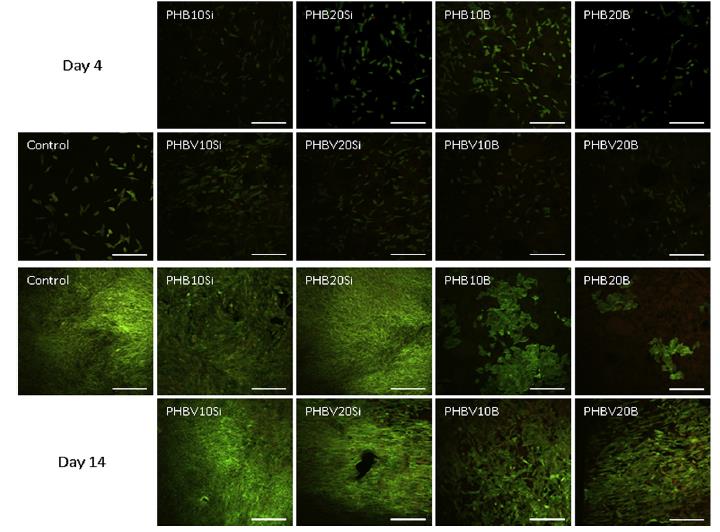|
生物活性可降解填料丙烯酸类骨水泥的制备及生物相容性评价
Materials Science and Engineering C 33 (2013) 1289–1299 生物活性自固化丙烯酸粘固剂的固相由不同的可生物降解填料如聚(3-羟基丁酸酯)(PHB)及其与羟基戊酸酯(PHBV)的共聚物改性组成。添加可生物降解的填料使得水泥可部分降解,这对于允许新骨替换和向内生长是重要的。为了表征水泥性能,研究了热分析,结晶度,固化参数,机械性能,降解和细胞试验。在此背景下,证实了PHBV聚合物的掺入使得水泥更具抗性,达到了典型PMMA骨水泥报道的范围内的值。结果还表明,对于所有研究的配方,填充PHBV的水泥在60天后比含有PHB的水泥吸收更多的水。关于成骨细胞细胞相容性评估,与包含PHB相比,包含PHBV极大地改善了填充有硅酸盐或硼酸盐玻璃的水泥中的生物反应。这种新方法的重要性在于水泥组分的性质和允许骨再生的可能性的组合,改善了与假体和骨的界面,并且产生具有适合骨水泥应用性能的新材料。 The solid phase of bioactive self-curing acrylic cements was modified by different biodegradable fillers such as poly(3-hydroxybutyrate) (PHB) and its copolymer with hydroxyvalerate (PHBV). The addition of the biodegradable fillers made the cement partially degradable, which is important to allow new bone replacement and ingrowth. The thermal analysis, crystallinity, curing parameters, mechanical properties, degradation and cellular tests were studied in order to characterize the cement performance. Within this context it was verified that the incorporation of the PHBV polymer made the cement more resistant, reaching values within the range reported for typical PMMA bone cements. The results also showed that the cement filled with PHBV took up more water than the cement with PHB after 60 days, for all studied formulations. Regarding the osteoblastic cytocompatibility assessment, the inclusion of the PHBV greatly improved the biological response in both cements filled with the silicate or the borate glass, compared to the inclusion of the PHB. The importance of this novel approach resides on the combination of the properties of the cements components and the possibility of allowing bone regeneration, improving the interfaces with both the prosthesis and the bone, and leading to a new material with suitable performance for application as bone cement (李永博)
|
